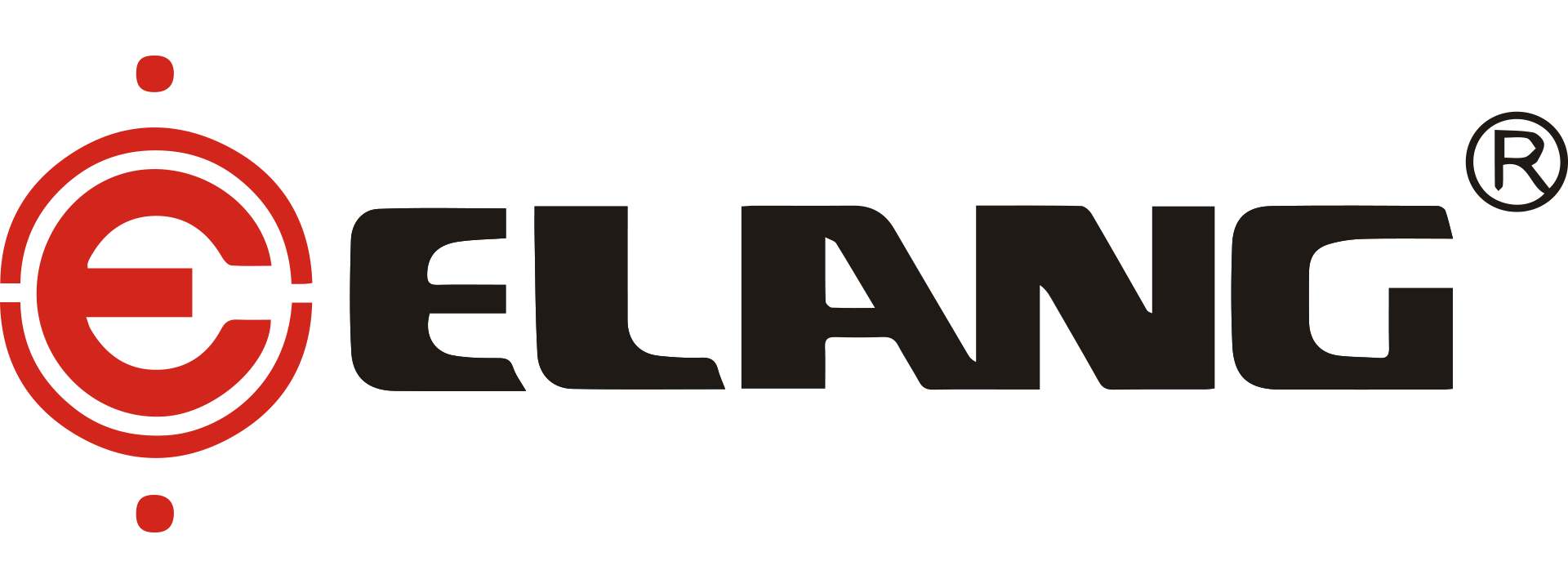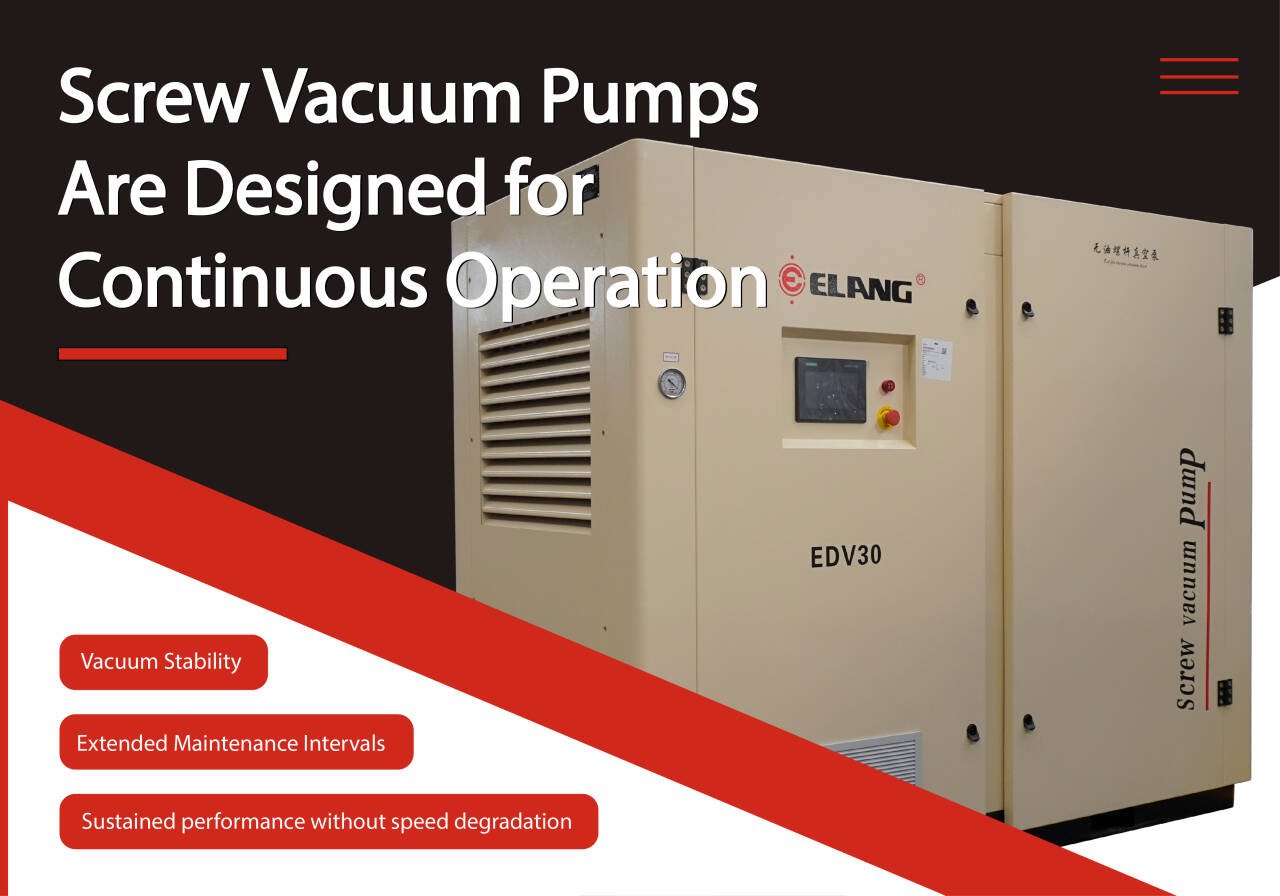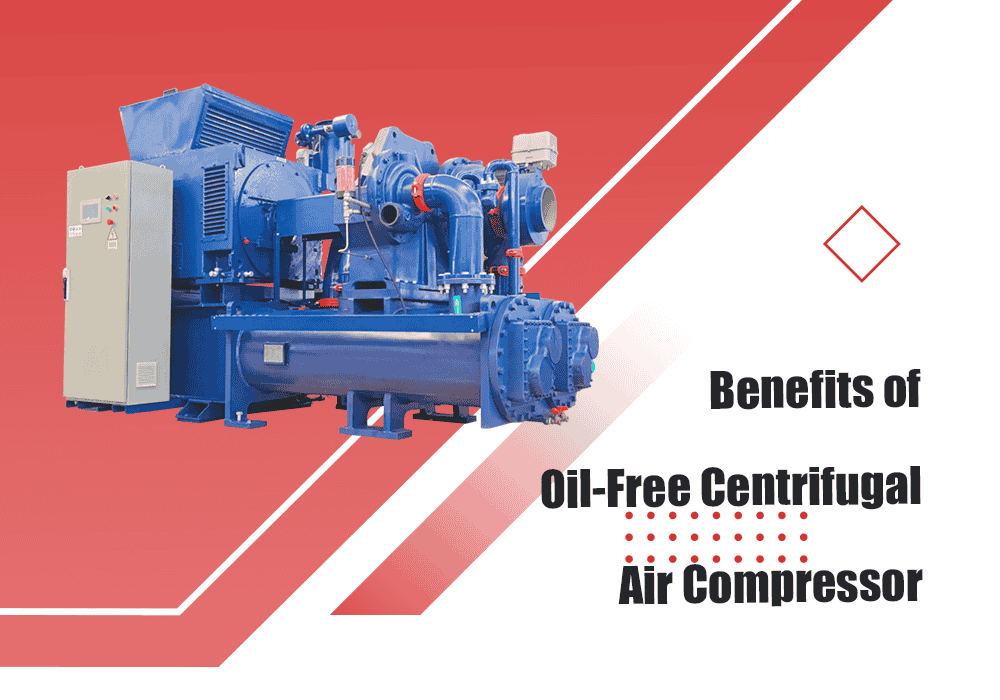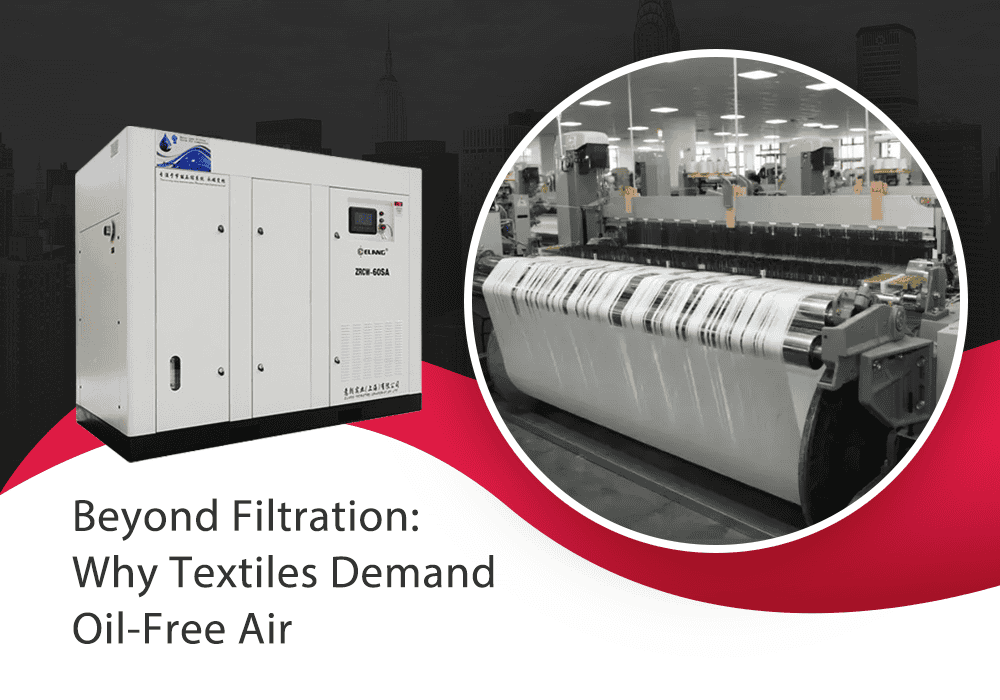
As an expert in compressed air systems for over 20 years, Elang provides you with complete solutions that are reliable and energy-efficient.
Compressor Guide: Identify your core needs and pain points
Your industry determines the design logic of the industrial air compressor station!
1. Industry Expertise Program
| Industry | Typical Application Scenarios | Key Pain Points | Our Expertise Program |
|---|---|---|---|
| Automotive | Spraying, assembly lines, pneumatic tools | Oil-free air demand and large fluctuations in gas consumption | Variable frequency oil-free compressor + precision filter |
| Food and Pharmaceuticals | Packaging, fermentation, cleaning, instrument gas | ISO 0 oil-free certification, pollution-proof | Fully oil-free system + adsorption dryer |
| Electronic Semiconductor | Chip packaging, clean room, test bench | Ultra-low dew point, zero oil risk | Class 0 oil-free compressor +-70℃ adsorption drying |
| Chemical Plant | Valve control, process gas, nitrogen generation | Explosion-proof certification, corrosion-resistant design | Explosion-proof model + stainless steel piping system |
| General Manufacturing | CNC machine tools, injection molding machines, pneumatic clamps | High energy consumption and multiple devices using gas in parallel | Intelligent variable frequency screw machine + cluster control system |
2. Key industry demand considerations
| Industry | Core Application Scenarios | Key Considerations (Emphasis) | Frequently Asked Questions |
|---|---|---|---|
| General Manufacturing | CNC machine tools, injection molding machines, pneumatic clamps | Cost-effectiveness, reliability, versatility, ease of maintenance | How to balance initial investment and long-term operating costs? Which type (piston/screw) is best for a medium-sized workshop? Can it meet the needs of multiple tools being used at the same time? |
| Automobile manufacturing/repair | Spraying, assembly line, test benches, purging, tire service | High reliability, large flow demand, stable high-quality air, low noise | How to ensure absolutely oil-free and dry air for spraying? How to keep production line pressure stable? How to support multiple stations? |
| Food and Beverage Processing | Filling and sealing, material conveying, mixing, packaging, purging | 100% oil-free, hygienic design, corrosion-resistant, FDA compliance | How to prove Class 0 oil-free air? Is equipment rust-proof? Can dryers ensure no liquid water? |
| Pharmaceuticals/Biotechnology | Process gas, equipment drive, clean room, labs, packaging | Strict oil-free, cleanliness, traceability, regulation compliance | Can you provide validation documents? How to meet ISO Class 0? How to prevent microbial growth? |
| Electronics/Semiconductors | Chip manufacturing, cleaning/testing, precision assembly, clean rooms | Ultra-pure air, low dew point, low noise/vibration, continuous operation | How do dryers guarantee -70°C? Are filters H1-rated or better? How is purity monitored? |
| Chemical/Petrochemical | Process gas, instrument air, valve control, pneumatic transmission | Explosion-proof, corrosion resistance, dry/clean instrument air | Does it meet ATEX Zone? Is the material corrosion resistant? Is instrument air system reliable? |
| Textile | Air-jet looms, spinning, dyeing, pneumatic transport | Large air consumption, stable pressure, dryness, rust prevention | How to handle peak demand from air jet looms? How to save energy? |
| Medical/Dental | Dental chairs, surgical tools, respiratory therapy, labs | Quiet, oil-free, compact, easy maintenance | Is the clinic noise level acceptable? Is gas pollution-free? |
| Construction/Mining | Rock drills, sandblasting, ventilation, equipment drive | Mobility, durability, high power, simple maintenance | Can it perform in harsh environments? Withstand frequent handling? |
| Plastic/Rubber | Injection molding, bottle blowing, extruding, control | Large stable air supply, pressure stability, energy saving | How much electricity can VSD save? How to prevent oil contamination? |
| Power Generation/Energy | Instrument air, control valves, purging, gas turbines | High reliability, redundancy, high-quality air, long uptime | How to ensure uninterrupted supply? How to meet strict drying/filtering standards? |
| Wood processing | Nail guns, spraying, dust removal, pneumatic transport | Dust filtering, explosion-proof for spraying, air matching tools | How to filter sawdust at intake? How to meet explosion-proof needs? |
Dedicated consulting services
Contact industry engineers now to get customized scenario solutions →
Compressor Guide: the need for air
Next, you will have a specific understanding and knowledge of the various specifications and parameter requirements of air compressors through the Elang air compressor buying guide.
1. Pressure requirements
Calculation formula:
Air compressor output pressure = maximum terminal demand pressure + pipeline pressure drop (1.5 Bar) + post-processing pressure drop (0.5 Bar)
Note: 50m pipeline pressure drop is about 0.7 Bar | precision filter pressure drop is 0.2-0.5 Bar*
First, you need to determine the desired pressure range in your work environment. Different industries and different work tasks have different pressure requirements.
For example, the pressure of industrial screw air compressors required by auto repair shops is usually lower, while the pressure required by construction sites is usually higher. It is very important to choose an air compressor that meets your pressure requirements.
2. Air flow (CFM)
Calculation formula:
Total demand CFM = (average gas consumption of all equipment × load factor + peak gas consumption × simultaneous factor) × (1 + 30% margin)
In addition to pressure requirements, you also need to determine the air flow required in your work environment. Air flow refers to the amount of air that passes through the air compressor per unit time. Different industries and different work tasks have different air flow requirements.
Taking spray painting as an example, the work of spray painting requires a higher air flow, so it is necessary to select the corresponding industrial screw air compressor.
Reserve 20% traffic redundancy for future expansion
Free Tools: Click here to use the free online CFM ( various unit conversion ) calculator
3. Air Quality
ISO 8573-1 standard quick reference table:
| Grade | Particles | Water Dew Point | Oil Content | Applicable Scenarios |
|---|---|---|---|---|
| Class 0 | 0.01μm | ≤-70℃ | 0 mg/m³ | Chip/Sterile Pharmaceutical/Breathing Air |
| Class 1 | 0.1μm | ≤-40℃ | 0.01 mg/m³ | Food packaging/precision spraying |
| Class 3 | 1μm | ≤-20℃ | 1 mg/m³ | General manufacturing |
1. Our solution:
Oil-free system: 100% Class 0 certified
Oil system: three-stage filtration achieves Class 1 (cost saving 30%+)
2. Technology selection – variable frequency screw compressor has become the mainstream
Comparison of the economic performance of three technologies (10-year TCO analysis):
| Model | Purchase Cost | Energy Cost | Maintenance Cost | Applicable Scenarios |
|---|---|---|---|---|
| Industrial frequency screw compressor | ★★☆ | ★★★ | ★★☆ | 24-hour stable load |
| Frequency conversion screw machine | ★★★ | ★ | ★★☆ | Fluctuating load (saving 40% of electricity) |
| Piston machine | ★ | ★★★★ | ★★★★ | Backup/very low flow |
Compressor Guide: Efficiency and Noise
1. Energy efficiency
Energy efficiency is a very important consideration. An air compressor with high energy efficiency can not only reduce energy consumption, but also reduce the impact on the environment. Common energy efficiency indicators include power consumption, energy efficiency rating, etc. When purchasing an air compressor, you should try to choose a product with high energy efficiency to reduce the cost of use.
2. Noise Level
Noise is an important issue when using air compressors. Some environments have higher requirements for noise, such as hospitals, dentistry, offices, etc., so they will choose silent oil-free air compressors, while some industrial environments have relatively low requirements for noise. When purchasing an air compressor, you should consider the noise level and choose a product that meets the requirements of the working environment.
Compressor Guide: Maintenance and After Sales Service
Maintenance and care
Maintenance and care are the key to long-term stable operation of air compressors. Before purchasing an air compressor, you should understand the relevant maintenance and care requirements, including replacing the filter element, cleaning the cooling system, etc. Choosing products that are easy to maintain and care for can reduce the cost of later maintenance.
Compressor Guide: Choose a trustworthy brand and a reputable partner
When purchasing an air compressor, brand and reputation are also factors to consider.
As an enterprise with over 25 years of development in the industry, Elang has become more complete and professional in various products, indicators and services; its partners all over the world are indispensable partners when choosing air compressors; Elang has more than 350 products to choose from and customize, and integrates independent research and development, design, manufacturing, sales, maintenance and services, and is committed to becoming an international leading brand in the air compressor industry.













